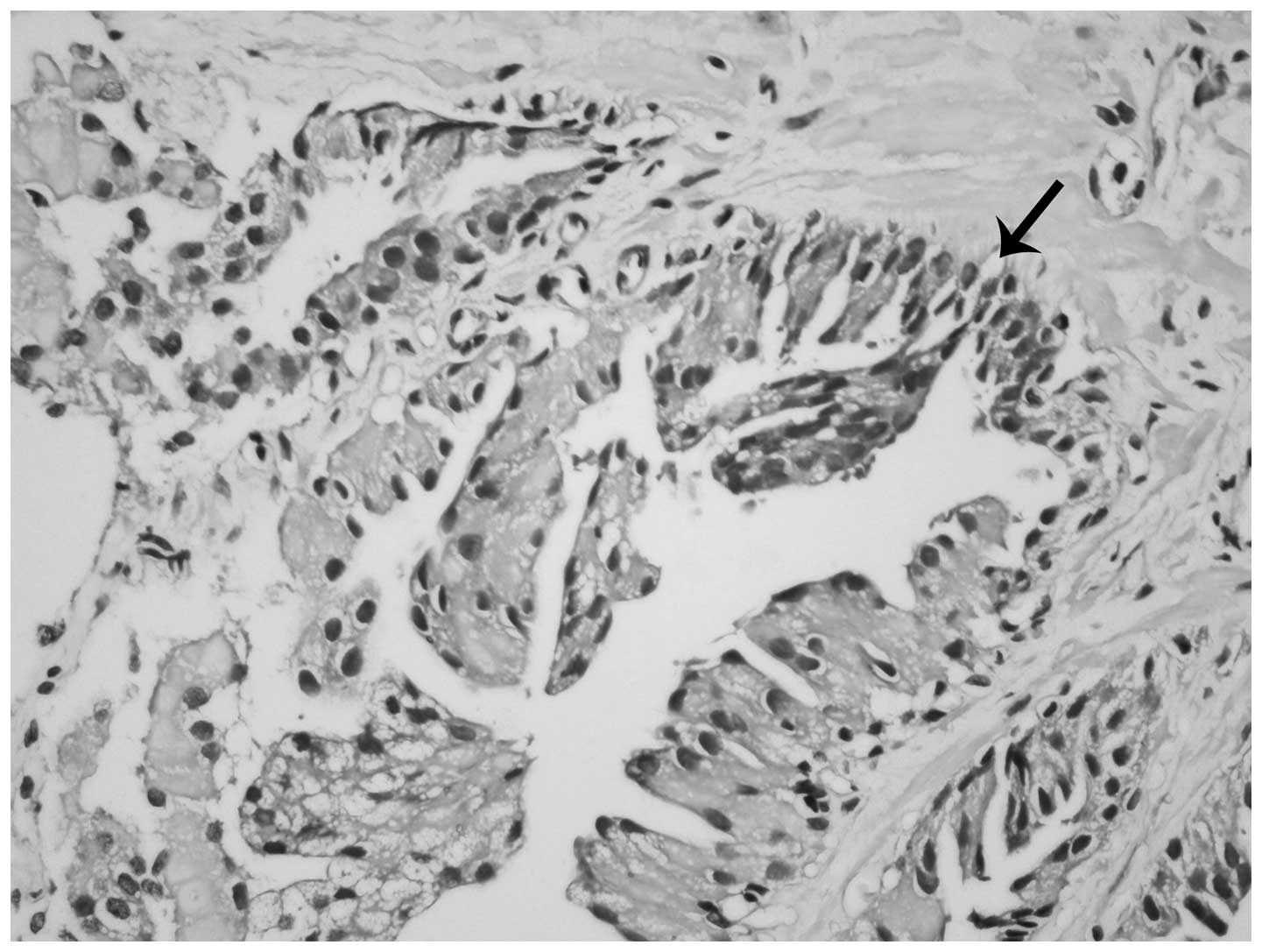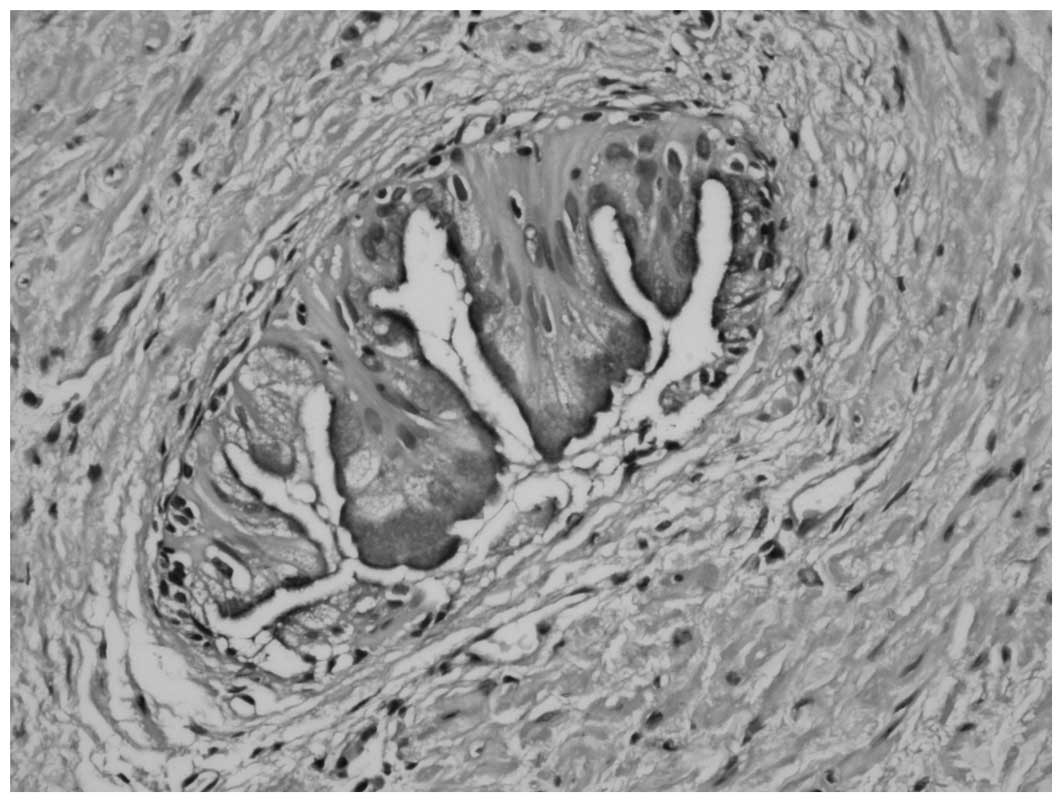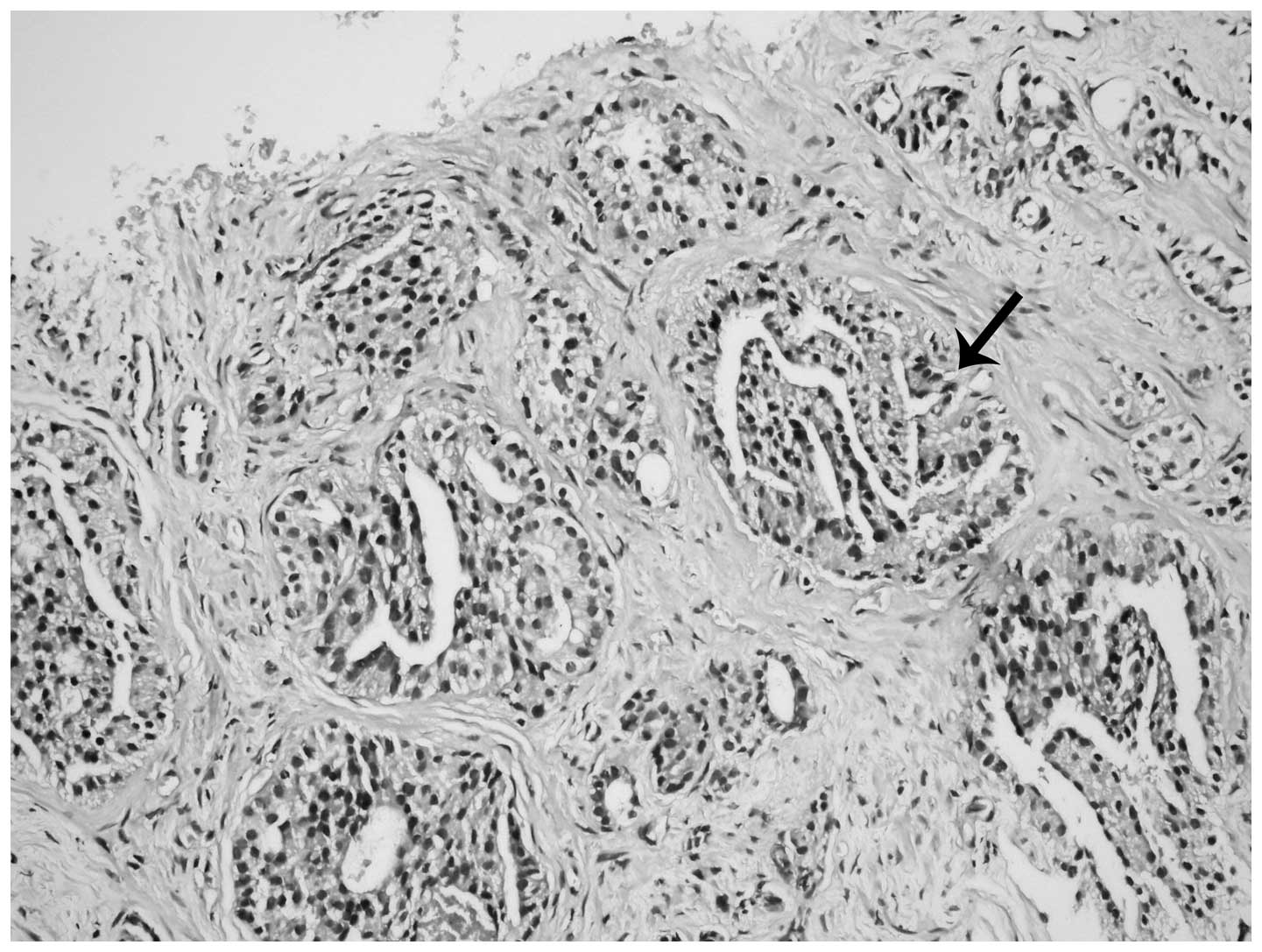Inverted (hobnail) high‑grade prostatic intraepithelial neoplasia and invasive inverted pattern
- Authors:
- Published online on: August 10, 2015 https://doi.org/10.3892/ol.2015.3584
- Pages: 2395-2399
Metrics: Total
Views: 0 (Spandidos Publications: | PMC Statistics: )
Total PDF Downloads: 0 (Spandidos Publications: | PMC Statistics: )
Abstract
High‑grade prostatic intraepithelial neoplasia (HGPIN) is considered to be an important precursor for prostatic adenocarcinoma. The present study aimed to investigate the histological features of the uncommon inverted (hobnail) pattern of HGPIN in transrectal ultrasonographic (TRUS) prostatic needle biopsies from 13 cases. These 13 diagnosed cases of inverted HGPIN were identified out of a total of 2,034 TRUS biopsies (0.63%), obtained from patients suspected to have prostate cancer. The hobnail pattern is comprised of secretory cell nuclei, which are histologically localized at the luminal surface of the prostate gland, rather than the periphery, and exhibit reverse polarity. Histological examinations were performed and the results demonstrated that 5 of the 13 cases exhibited pure inverted histology, while HGPIN was observed to be histologically associated with other patterns in the remaining 8 patients. In addition, an association with adenocarcinoma was identified in 7 of the 13 cases. All 7 carcinomas accompanied by inverted HGPIN were conventional acinar adenocarcinoma cases; of note, for these 7 cases, the Gleason score was 7 for each. One acinar adenocarcinoma case accompanying inverted HGPIN demonstrated hobnail characteristics in large areas of the invasive component. It was observed that nuclei were proliferated in the invasive cribriform glands, which was comparable to that of inverted HGPIN, and were located on the cytoplasmic luminal surface; a similar morphology was also observed in individual glands. In conclusion, the results of the present study suggested that the hobnail HGPIN pattern may be of diagnostic importance due to its high association with adenocarcinoma and the high Gleason scores in the accompanying carcinomas.

















